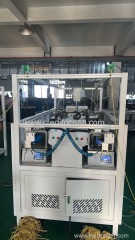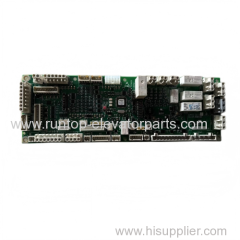.jpg)
|
Arlex Plastics Machinery Co., Ltd.
|
Gold Index: 2569
You are here: home > Introduction > closed loop system
Product (31)
- Classic Type Injection Molding Machines (10)
- Variable Pump Injection Molding Machines (10)
- Servo Drive Injection Molding Machines (10)
- Others (1)
Certificates (4)
winch parts (11)
Product Details (9)
Workshop (10)
Introduction (13)
News (23)
Credit Report
Products Index
Company Info
Arlex Plastics Machinery Co., Ltd. [China (Mainland)]
Business Type:Manufacturer
City: Ningbo
Province/State: Zhejiang
Country/Region: China (Mainland)
Premium Related Suppliers
Introduction
closed loop system
A Closed-Loop system utilizes feedback to measure the actual system operating parameter being controlled such as
temperature, pressure, flow, level, or speed. This feedback signal is sent back to the controller where it is compared
with the desired system setpoint. The controller develops an error signal that initiates corrective action and drives the
final output device to the desired value. In the DC Motor Drive illustrated above, the tachometer provides a feedback
voltage which is proportional to the actual motor speed. Closed-Loop Systems have the following features:
· A Reference or Set Point that establishes the desired operating point around which the system controls.
· The process variable Feedback signal that "tells" the controller at what point the system is actually operating.
· A Controller which compares the system Reference with the system Feedback and generates an Error
signal that represents the difference between the desired operating point and the actual system operating value.
· A Final Control Element or mechanism which responds to the system Error to bring the system into balance.
This may be a pneumatically controlled valve, an electronic positioner, a positioning motor, an SCR or transistor
power inverter, a heating element, or other control device.
· System Tuning Elements which modify the control operation by introducing mathematical constants that tailor
the control to the specific application, provide system stabilization, and adjust system response time. In process
control systems these tuning elements are: Proportional, Integral, and Derivative (PID) functions. In electrical
systems, such a generator voltage regulators and motor drives, typical tuning adjustments include:
· Gain, the amplification factor of the controller error amplifier, which affects both system stability and
response time;
· Stability which provides a time-delayed response to feedback variations to prevent oscillations and reduce
system "hunting";
· Feedback an adjustment which controls the amplitude of the feedback signal that is balanced against the
system set-point;
· Boost which is used in AC and DC motor drives to provide extra low-end torque; and
· IR Compensation which provides a control signal that compensates for the IR Drop (Voltage Drop) which
occurs in the armature windings in DC machines due to increased current flow through the armature.
temperature, pressure, flow, level, or speed. This feedback signal is sent back to the controller where it is compared
with the desired system setpoint. The controller develops an error signal that initiates corrective action and drives the
final output device to the desired value. In the DC Motor Drive illustrated above, the tachometer provides a feedback
voltage which is proportional to the actual motor speed. Closed-Loop Systems have the following features:
· A Reference or Set Point that establishes the desired operating point around which the system controls.
· The process variable Feedback signal that "tells" the controller at what point the system is actually operating.
· A Controller which compares the system Reference with the system Feedback and generates an Error
signal that represents the difference between the desired operating point and the actual system operating value.
· A Final Control Element or mechanism which responds to the system Error to bring the system into balance.
This may be a pneumatically controlled valve, an electronic positioner, a positioning motor, an SCR or transistor
power inverter, a heating element, or other control device.
· System Tuning Elements which modify the control operation by introducing mathematical constants that tailor
the control to the specific application, provide system stabilization, and adjust system response time. In process
control systems these tuning elements are: Proportional, Integral, and Derivative (PID) functions. In electrical
systems, such a generator voltage regulators and motor drives, typical tuning adjustments include:
· Gain, the amplification factor of the controller error amplifier, which affects both system stability and
response time;
· Stability which provides a time-delayed response to feedback variations to prevent oscillations and reduce
system "hunting";
· Feedback an adjustment which controls the amplitude of the feedback signal that is balanced against the
system set-point;
· Boost which is used in AC and DC motor drives to provide extra low-end torque; and
· IR Compensation which provides a control signal that compensates for the IR Drop (Voltage Drop) which
occurs in the armature windings in DC machines due to increased current flow through the armature.
Pre Page:
On the control of plastic injection...
Next Page:
main component suppliers
.gif)



